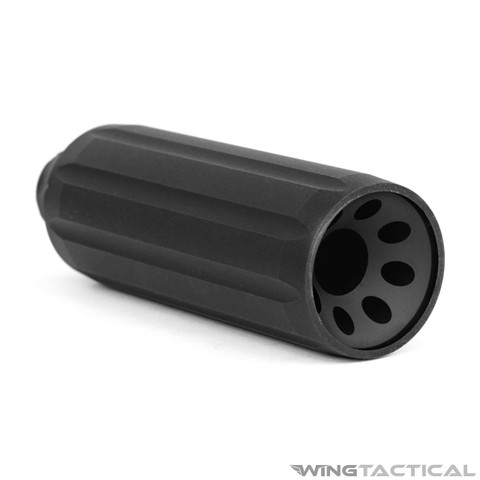Muzzle devices, like the .308 muzzle brake, are small metal components that thread onto the end of a firearm’s muzzle to change specific aspects of how it performs. Though these devices have been around for nearly a century, they are arguably more popular than ever today with many commercially available firearms coming with one already installed. Whether you want to minimize muzzle flash or help control recoil, a high-quality .308 muzzle device can help you improve both your gun and your shooting ability. Wing Tactical has a large collection of .30-caliber muzzle devices.
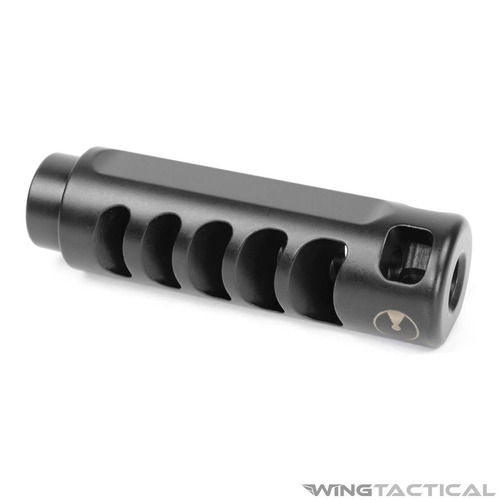
Buying the Right .308 Muzzle Brake for Your Firearm
When you shop for muzzle brakes and other muzzle devices, it’s important to make sure you buy devices that will be compatible with your rifle’s caliber. These devices will screw right onto the end of your muzzle and any rounds fired will pass through them on their way out of your gun, so choosing the incorrect size when buying something like a .308 muzzle brake could turn into a major safety concern. For .30-caliber rifles, the standard thread pitch is 5/8x24. As you browse through the selection of muzzle devices available through Wing Tactical, you’ll see that each one is clearly labeled with detailed specifications. It’ll make it easy for you to find the right device to fit your firearm’s barrel.
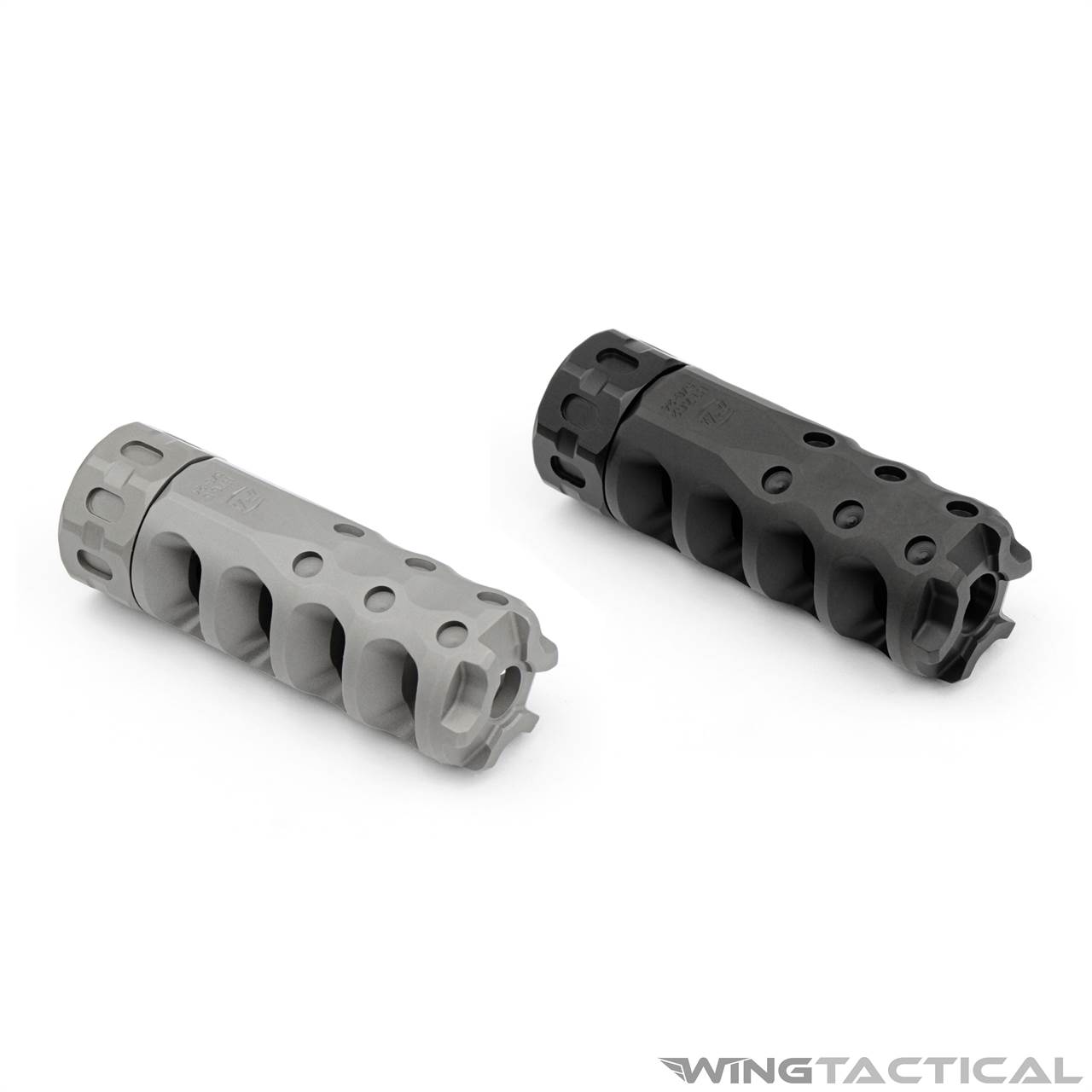
Muzzle Brakes
If you fire your .30-caliber firearm without a .308 muzzle brake on it, you’re going to feel your fair share of recoil. This recoil may have an impact on your accuracy. A muzzle brake like the Precision Armament Hypertap Muzzle Brake can dampen the recoil and even eliminate it altogether in some cases so that it doesn’t affect your ability to maintain control of your gun.
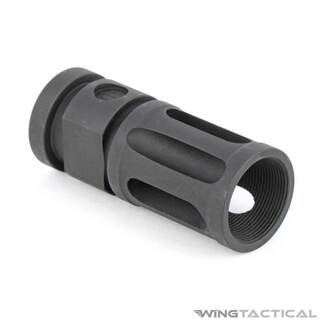
Flash Suppressors
Also referred to as flash hiders, flash suppressors are designed to help reduce the muzzle flash you’ll experience when firing your .30-caliber gun. The Primary Weapons Systems Triad Flash Suppressor is one of the many flash suppressors that Wing Tactical sells to reduce the flash for nighttime situations or occasions where you want to remain hidden.
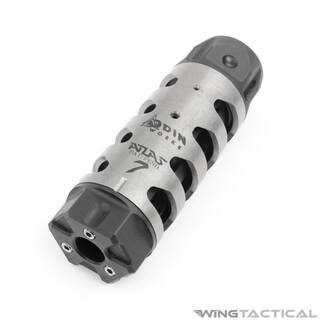
Compensators
While commonly thought to reduce recoil, compensators serve a different purpose when attached to firearms. A compensator like this Odin Works ATLAS 7 Compensator (.308 / 300 Blackout) will make it possible for you to control muzzle rise more effectively, which will provide you with better control of your .30-caliber gun.
Wing Tactical: The Leader in Quality .308 Muzzle Devices
Over the last decade-plus, Wing Tactical has established itself as a leading provider of muzzle devices for first responders, competitive shooters, civilian gun owners, and even active-duty members of the military. We only sell products that we would use ourselves to ensure your satisfaction.
Adding a .308 muzzle brake or another type of muzzle device to your firearm will put you in a position to make the most of it every time you fire it. You’ll be able to control your gun better than you would otherwise when you have the right muzzle device in place.
Whether you know exactly which .308 muzzle device you would like to buy or you’re interested in speaking with one of our experts at Wing Tactical about your needs so that they can assist you in choosing the right muzzle device for your firearm, we’re always here to help. Touch base with us today and enjoy fast shipping on every order!
Frequently Asked Questions
Do I need a .308 muzzle brake to use a .30-caliber gun?
While a .308 muzzle device is not necessary to ensure you have a fully functional firearm, skipping out on this device will also mean skipping the benefits it offers. Without a muzzle device, you’ll have to deal with unhindered recoil, muzzle flash, and muzzle rise.
Will a muzzle brake eliminate recoil completely?
You will typically still experience some recoil when you fire a gun with a muzzle brake on it. But this recoil will be reduced dramatically, and it will positively impact your ability to maintain your accuracy while firing your gun.
Should I put a .308 muzzle brake on a hunting rifle?
Adding a muzzle brake to a hunting rifle would be an excellent idea since it’ll allow you to take more control of your gun as you hunt while improving your accuracy. At the same time, it won’t add much weight to your rifle, which will be a big plus when you’re walking around the woods with it.
Which brands make the best muzzle devices?
Every 7.62 and .308 muzzle device that we sell at Wing Tactical has been tested and/or used by our staff members to ensure it works like it’s supposed to. We sell muzzle devices from reputable brands like VG6 Precision, Precision Armament, and Strike Industries.
Why should I upgrade my muzzle device?
As long as your muzzle is threaded to the right specifications, you can change out muzzle devices at any time — these easy-to-add accessories are there to make shooting more enjoyable or perform a practical function to support your applications. If your muzzle is not threaded, you'll need to have this service performed by a gunsmith or swap out your barrels to take advantage of the capabilities of a new muzzle device.






